Thinking about showers?
Hopefully you’re taking good care of yourself and showering regularly. But actually I’m not talking about personal hygiene, I’m talking about BABY SHOWERS! They can be oh so fun but also oh so stressful. If you haven’t already started a baby registry with all the items you think you’ll need for your little babe’s arrival (in about 16 short weeks, eek!!) then you may be starting to feel the pressure to get going! Family members and friends might already be asking you what they can buy for that sweet growing baby.
I don’t know about you, but I would consider myself pretty picky when it comes to things for my baby. When I was pregnant, I made it very clear to family and friends that I didn’t want to be gifted random colorful toys or baby clothes – I only wanted to receive the items that I had specifically curated and put onto our baby registry. And even at that, I still got several random pink outfits and hand-sewn or crocheted blankets, which hold great sentimental value, truly, but when you see a long list of registry essentials that have yet to be purchased, that can create some mixed feelings.
So maybe you’ve started your list, maybe you haven’t – and that’s ok! I’m bringing you all the knowledge I’ve accumulated as a holistic mama who recently went through the whole pregnancy/baby shower/newborn thing. I’ve curated for you the ultimate list of toxin-free baby registry must haves. Not the things that might be nice but will ultimately end up in a drawer, unused. Nope, none of that. These are the absolute essentials. And toxin-free, too! That was my #1 priority when it came to choosing things for my daughter, so you’re reaping the benefits of my hundreds of hours of painstaking research (you’re welcome ;)).
So here it is! The toxin-free things I *actually* used with my baby. I recommend using Babylist to create your registry. You can add links from ANY website!
The Ultimate Toxin-Free Baby Registry Of Total Essentials
Diapers: We chose to go the cloth diapering route. No regrets; absolutely none. It has been the best thing of all time. We fell in love with the Esembly cloth diapering system, and literally use all of their products - diapers, laundering, skincare, etc. It’s totally amazing, and totally toxin-free and so great for your little baby’s bum. Shop Esembly here.
If you decide that cloth diapering isn’t for you, I recommend HealthyBaby diapers, or Coterie.
Wipes: We use the cotton wipes that come with the Esembly diapering system. We just wash them with the cloth diapers and use the Esembly foaming wash that goes with them. It’s literally fool-proof.
If you want to go the disposable route for wipes, I recommend these organic cotton dry wipes. Just add a little spritz of water from a tiny spray bottle :)
Diaper Cream: I love to use this beef tallow-based cream for our daughter’s sensitive areas (look up the benefits of organic beef tallow: it’s AMAAAAZING), or we also use the Everyday Balm from Esembly.
Diaper Pail: We love the Ubbi Diaper Pail made from steel. It works with our cloth diapering bags and would also work with regular trash bags too for disposable diapers.
Changing Table Pad: Naturepedic Changing Pad. Doesn’t need a cover :)
Nursing Pillow: Personally I didn’t use a nursing pillow much (I birthed a 10.5lb baby so I didn’t need to prop her *quite large* head up much for nursing), but she liked to use this toxin-free nursing pillow as a support when she started to sit up on her own. I purchased a Boppy brand organic cotton cover for it since they are the same size pillow.
Diaper Bag: This organic cotton convertible tote is toxin-free and spacious (and totally cute!!).
Burp Cloths: If you have a baby that spits up (we did), then you will need WAY more burp cloths than you think. Like way way way more. We loved these.
Bibs: See above comment about burp cloths. Our baby went through 5-10 bibs per DAY because of all her spit up (cue the upside-down smile emoji). These were wonderful and came in multiple cute colors, and these white ones went well with any outfit.
Pacifiers: Pacifiers are pretty highly debated, especially in the holistic health world. We let our daughter use one until she started teething around 6 months, and then quickly weaned her off of it. We really loved these silicone pacifiers.
Baby Blanket: This is the first of many brags I will make about Parade Organics. I truly could not love a baby company more. They are based in Canada and truly have the softest, highest quality baby textiles (blankets, clothing, sleepers, etc.). We couldn’t have been more obsessed. We bought 2 of these organic cotton baby blankets for our daughter and she loved to be swaddled in them as a newborn and still loves to play with them and use them for warmth in her car seat and stroller. 10/10.
Baby Lounger: Although we didn’t use it much past the age of about 4 months, we did love the Snuggle Me Organic when our girl was a newborn. It’s not considered safe for overnight sleeping use, but we would let her nap in it while we kept an eye on her during the day. It’s super nice to have a comfy spot to place the baby so they can snooze while you get other things done (laundry, cooking, watching Netflix, etc.)
Bassinet: I suggest the Nuna Sena Aire. It's a bassinet that converts to a pack-n-play style travel crib that folds up into a super compact bag. It’s toxin free and totally stylish.
Bouncer: I preferred to avoid any electronic baby gear that plugged into the wall because I wanted to limit our daughter’s exposure to harmful EMF radiation, so we opted for this BabyBjorn Bouncer, which truly was amazing. Like honestly the baby loved it and loved the bouncing motion of the seat. We would put her in it while we cooked and ate dinner and she was 100% content to just look at us and smile from her bouncer.
Stroller: The main thing to look out for in baby gear is added flame retardants. There are lots of good stroller options out there that are relatively low in toxins, so feel free to do your own research! We chose the Vista V2 Stroller for our daughter because it has the option to convert to a double stroller (which felt important to us since we hope to have more kids in the future). Another great brand is Nuna - they do not use any added chemical flame retardants in any of their baby gear.
Car Seat: Again, we went with the UPPAbaby system and got the Mesa V2 Car seat… all three colors are flame-retardant free!! Nuna is also a great brand for non-toxic car seats. If you’d rather use a convertible car seat (one that stays in the car and cannot connect to a stroller base but can hold your child up to much heavier weights) then I suggest the Nuna Rava or Nuna Exec.
Jogging Stroller: This stroller is an investment, for sure, but a worthwhile one. It is free of flame retardants and PFAs, is made from recycled plastic bottles, and it brags the OEKO-TEX certification (meaning it has been tested for toxic substances and passed the test!). You can also add the organic cotton seat liner so that your baby’s skin is only touching the cleanest of materials.
Car Seat Cover: This muslin car seat canopy.
Clothing: You’ll need mostly full-body onesies at first (some brands call them sleep & plays). We love the 100% cotton ones (ideally organic cotton) from brands like Parade Organics, Little Plant by Carters, Old Navy, Rabbit + Bear, and O2 Baby (on Amazon). You’ll want to avoid polyester fabric as much as possible, as it contains chemicals that can be harmful to your baby’s hormones and lungs.
SleepSacs: Parade Organics. We got 2 of each size.
Swaddler: Our daughter hated having her arms confined, so we gave up on a swaddle for sleeping within about 10 days, but this one is great if your baby likes to have their arms held down.
Laundry Detergent: We use the washing powder that comes with our cloth diapering system to wash our clothes too, but I also recommend Branch Basics for a toxin-free laundry option for your sweet lil babe.
High Chair: We have loved the Stokke Tripp Trapp.
Baby floor seat/booster seat: The Upseat (code KRISTENVANGILSE10) is the only hip-safe baby floor seat on the market. Other brands (like Bumbo) can cause hip dysplasia. We love the Upseat!
Breast Pump: I got the Spectra S1 breast pump through my insurance, but I also recommend the Haaka silicone breast pump for collecting the letdown from the opposite breast to create a freezer stash of breast milk.
Breast Milk Storage Bags: I highly suggest silicone storage bags, because plastic can leach harmful chemicals into the breast milk. We have used these silicone bags as well as these silicone pouches, and both are wonderful. Another great option is to freeze your milk in glass Mason jars (just make sure to leave room at the top for the milk to expand as it freezes!).
Bottles: We wanted to avoid plastic bottles since plastic contains harmful chemicals that can transfer to liquids, especially when warmed. We opted for these glass and silicone bottles, which we started using with our baby around 6 weeks old. We love them!!
Bottle warmer: Some people say that a bottle warmer is unnecessary, but we personally use ours for every bottle and love it! We have this one.
Bathtub: I spent a lot of time researching baby bath tubs. There aren’t very many options that are plastic free, so I ended up choosing this one that is BPA, PVC, and phthalate free. We used this tub with our daughter until she was able to climb out of it around 7.5 months. Another option is this Puj tub that is used in a regular sized sink (our daughter was almost 11lbs at birth so even though we had this tub, she was almost too big for it from the beginning).
Baby Wash: Pipette Baby Shampoo and Body Wash - Fragrance Free.
Comb + Brush: Green Sprouts.
Wash Cloths: Any organic cotton washcloths will do, but we loved these from Carter’s.
Towel: Look for organic cotton. We love these animal towels.
Crib: I recommend choosing a wooden crib over a metal one. This crib from Dadada is a sturdy, beautiful, high-quality option that is GREENGUARD Gold Certified (an awesome certification for low-VOCs). If you’ve got an unlimited crib budget, then you might want to check out the Kalon Caravan crib - it’s the ultimate non-toxic, eco friendly crib on the market these days.
Crib Sheets: Again, organic cotton is the way to go. Honest Baby is a great company for organic cotton baby gear. We use these sheets!
Crib Mattress: I recommend Naturepedic or Kalon for a crib mattress. Avoid foam mattresses which are not certified GOLS (Global Organic Latex Standard, organic latex) because of chemical off-gassing.
Sound Machine: A sound machine that uses rechargeable battery power is preferable over one that needs to be plugged in constantly because of “dirty electricity” (harmful EMF radiation) that comes from outlets. We like this one.
Baby monitor: Personally I am not a big fan of baby monitors because of the massive amount of EMF radiation that they put off in a baby’s room (near their bed while they are sleeping), especially ones that utilize bluetooth and/or WiFi. If you are keeping EMFs in mind, you’ll want to avoid wearable tech for babies, like bluetooth or Wifi-enabled devices. If you really want to have a monitor that uses video, I suggest this audio-only baby monitor. The safest option as far as radiation goes is to opt out of baby monitors entirely, which is what we decided to do after a couple of months.
Snot Sucker: The NoseFrida.
Nail Trimmer: This thing is awesome.
Teethers: Anything 100% food-grade silicone. We like the ones from Mushie.
Toys: We avoid plastic to the best of our ability, so we focus on toys that are 100% organic cotton, 100% food-grade silicone, and 100% natural wood. We love Apple Park for stuffed animals and loveys.
Play gym: Finn + Emma Play Gym.
Play Mat: We have absolutely loved the toxin-free play mats from Toki Mats.
Baby Carrier/Wrap: For a newborn/young baby, I practically lived in my baby wrap. For a more structured baby carrier, I recommend the Nuna CUDL for things like hiking/long walks.
Glider: We have had 2 different DaVinci Baby gliders (we currently have this one), and I honestly couldn’t be happier with them. None of their gliders use any chemical flame retardants which is a BIG WIN in my book. Another great low-VOC and low-tox brand is Babyletto.
Rolling baby station: Okay, this is a random find but I definitely suggest having a metal rolling cart full of baby supplies. I initially had this by my bedside with diapering supplies, pumping supplies, snacks, water, my charger and headphones, tissues, and burp cloths. After several weeks we moved it permanently to sit next to the glider in our daughter’s nursery and it became the home for my pump and some of her blankets and toys. It’s versatile and so helpful to have.
Clothing Hamper: We love this 100% cotton clothing hamper for the nursery. Great for laundry, blankets, or toys.
FOR MOM:
Pads: These organic cotton pads are amazing for postpartum recovery. I also loved their disposable underwear - I lived in these for the first 2 weeks postpartum.
Peri bottle: This thing is so much better than the one they gave me at the hospital.
Perineal Balm: This perineal balm feels like magic *down there.* I kid you not. You just GOTTA have this for your tender lady parts postpartum.
Nursing bras: I have to hand it to Bodily that they legitimately created my ideal postpartum nursing bra on all fronts. Comfortable, lightweight, no wire, strenchy, fits like a glove, and made from non-toxic materials. *Chef’s kiss*
Nursing pads: These organic bamboo nursing pads are perfect for stopping those annoying leaks.
Silver nipple cups: Sore nipples from breastfeeding? These are literally lifesavers. I cannot tell you how much I wish I would’ve ordered these sooner than 4 weeks postpartum.
Robe: Yep, go ahead and register for a robe for yourself, mama. You’ll be living in it for a couple weeks after baby gets here. I LOVE this organic cotton robe from Under the Canopy. So freaking soft and comfy.
Aaaaand that’s it! All my absolute essentials. And just a reminder, mama: what your baby needs more than anything else is YOU. Your love, your body, your heartbeat, your voice. You don’t need the fanciest gear or the most beautiful nursery or the best baby tech. In fact, you don’t need to buy everything 100% toxin free. You just need to give your baby YOU. It’s hard, it’s tiring, it’s painful, it’s tearful, but it’s also beautiful and fulfilling and heartwarming and amazing. You’ve got this mama.
Now get to work on that registry!
FOLLOW @the.organimama
Looking for weekly pregnancy updates & advice from industry experts?
Sign up here
ABOUT THE AUTHOR
Kristen is a Christ follower, wife, mama, and holistic living enthusiast, with a passion for birth photography. Kristen's journey from illness to wellness led her to embrace toxin-free living. She shares her expertise through photography services and valuable tips for holistic living.
Visit Kristen’s page
]]>



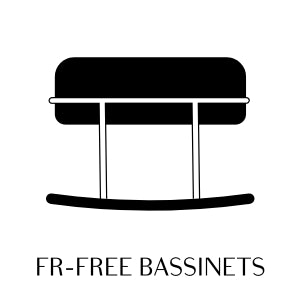

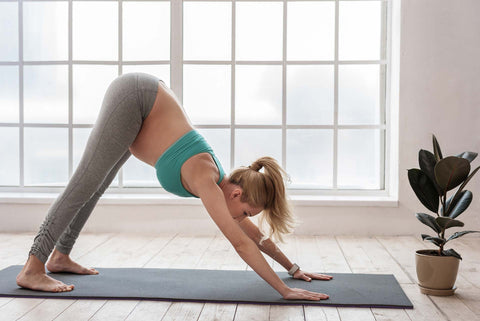

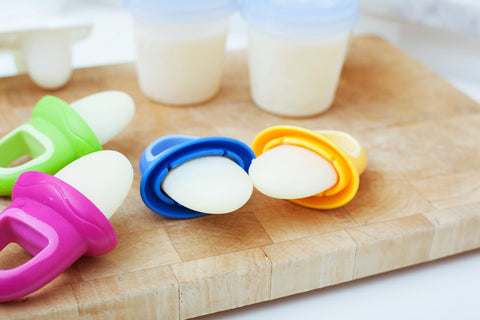
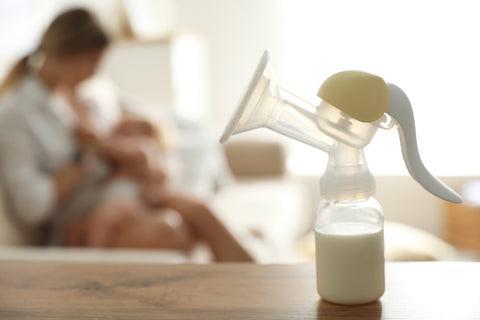

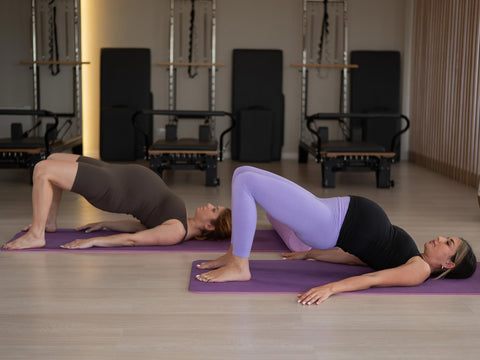 Training your Body
Training your Body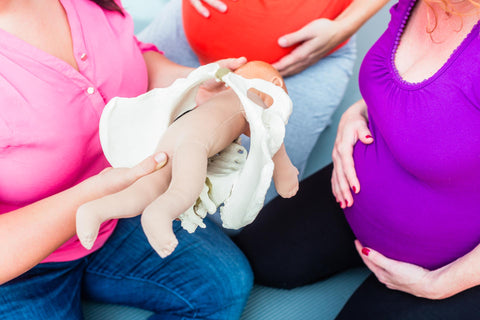 Training Your Mind
Training Your Mind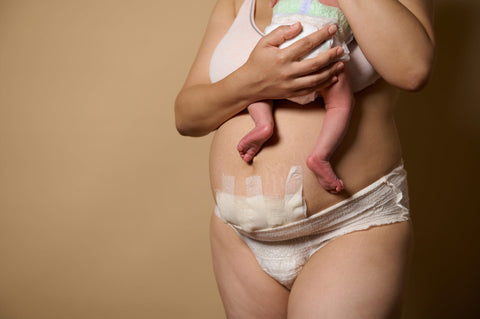 Prepping for Postpartum
Prepping for Postpartum


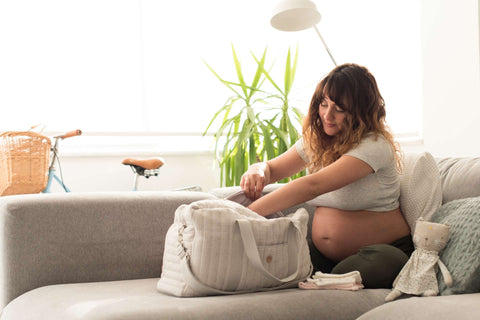 What to pack in your Labor Bag
What to pack in your Labor Bag What To Pack In Your Postpartum Bag
What To Pack In Your Postpartum Bag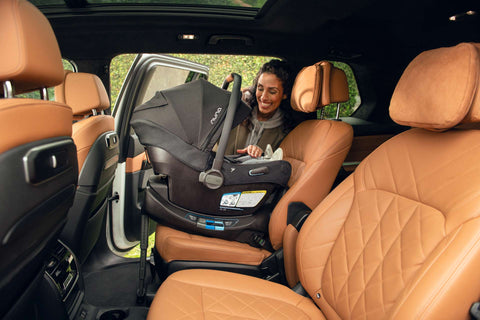 What To Pack In Your Baby Bag
What To Pack In Your Baby Bag
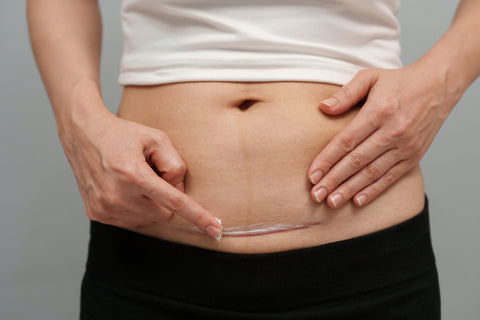
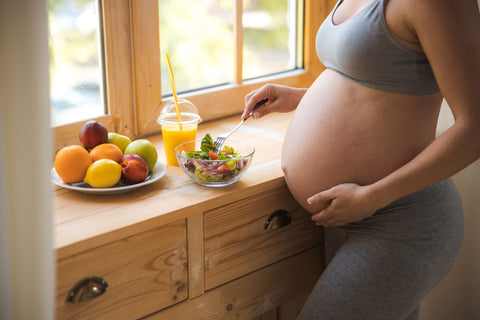

 Our family is one team - we’re all in this together!
Our family is one team - we’re all in this together! Independent play for the win!
Independent play for the win!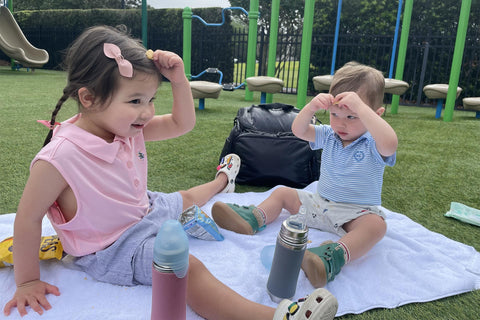 Positive attention for all!
Positive attention for all! Got sugar?
Got sugar?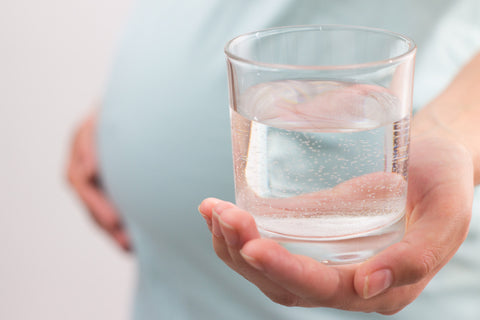







 ABOUT THE AUTHOR
ABOUT THE AUTHOR



 ABOUT THE AUTHOR
ABOUT THE AUTHOR




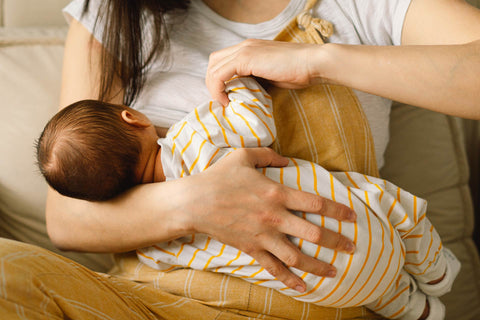








 This is also around the time most medical providers may schedule an anatomy scan to check baby’s size, growth, anatomy and placenta via ultrasound. Getting that seal of good health all while seeing your babe move around on the ultrasound monitor can be the exact kind of reassurance some need, especially for parents who have undergone fertility treatments and might be dealing with a heightened level of anxiety throughout the pregnancy. Hopefully by now you have kicked the first trimester nausea and have gained some energy back to get into the reel of big purchases, big decisions and plan making that you may have been previously putting off all while realizing that baby will be in your arms before you know it!
This is also around the time most medical providers may schedule an anatomy scan to check baby’s size, growth, anatomy and placenta via ultrasound. Getting that seal of good health all while seeing your babe move around on the ultrasound monitor can be the exact kind of reassurance some need, especially for parents who have undergone fertility treatments and might be dealing with a heightened level of anxiety throughout the pregnancy. Hopefully by now you have kicked the first trimester nausea and have gained some energy back to get into the reel of big purchases, big decisions and plan making that you may have been previously putting off all while realizing that baby will be in your arms before you know it!








 Because they have to support the weight of your growing baby, pelvic floor muscles work harder during pregnancy than they normally do. Along with everything else in your body, pelvic floor muscles also soften during pregnancy because of ALL the pregnancy hormones that our bodies have to deal with! So whether you’re giving birth vaginally or through a cesarean, your pelvic floor muscles will definitely be affected during pregnancy. This is why even though I was feeling healthy in this area of my body, and even though I was not peeing when I coughed or laughed, I went to see a pelvic floor therapist just to get a baseline assessment. I’m really happy I did this as I now know that I was setting myself up for a better recovery!
Because they have to support the weight of your growing baby, pelvic floor muscles work harder during pregnancy than they normally do. Along with everything else in your body, pelvic floor muscles also soften during pregnancy because of ALL the pregnancy hormones that our bodies have to deal with! So whether you’re giving birth vaginally or through a cesarean, your pelvic floor muscles will definitely be affected during pregnancy. This is why even though I was feeling healthy in this area of my body, and even though I was not peeing when I coughed or laughed, I went to see a pelvic floor therapist just to get a baseline assessment. I’m really happy I did this as I now know that I was setting myself up for a better recovery!
 Are there any common misconceptions or myths about pelvic floor therapy that you find yourself addressing regularly?
Are there any common misconceptions or myths about pelvic floor therapy that you find yourself addressing regularly?
 What Should I Include On A Birth Plan?
What Should I Include On A Birth Plan? Should You Have A Birth Plan If You Are Planning A C-section?
Should You Have A Birth Plan If You Are Planning A C-section?
 Can you talk a little bit about preventative care?
Can you talk a little bit about preventative care?





 Hi Brandi! How did you get into essential oils and massage?
Hi Brandi! How did you get into essential oils and massage? Are there essential oils you recommend for fertility?
Are there essential oils you recommend for fertility? Essential oils for new baby and parent?
Essential oils for new baby and parent? What is a doula and how can having one benefit me and my partner?
What is a doula and how can having one benefit me and my partner? There are also postpartum doulas that may only work in the post-baby time. They come to your home and take care of your mother and baby, help prepare food, wipe up small messes, and help with dishes or folding laundry so that you can get the most rest. This allows you to heal faster and can help you focus on bonding with the baby and securing a good breastfeeding relationship. Be sure to ask friends and family for money towards a doula or sign up for “Be Her Village” which is a support registry people can put money towards doulas, lactation consultants and so much more! Having support, guidance, and plenty of rest to recover helps you to be the best parent and also helps your mental and emotional help on top of physical healing.
There are also postpartum doulas that may only work in the post-baby time. They come to your home and take care of your mother and baby, help prepare food, wipe up small messes, and help with dishes or folding laundry so that you can get the most rest. This allows you to heal faster and can help you focus on bonding with the baby and securing a good breastfeeding relationship. Be sure to ask friends and family for money towards a doula or sign up for “Be Her Village” which is a support registry people can put money towards doulas, lactation consultants and so much more! Having support, guidance, and plenty of rest to recover helps you to be the best parent and also helps your mental and emotional help on top of physical healing.









 Ethical and sustainable slow fashion is always welcome in my life, and I love Oak Meadow and The Simple Folk for their beautiful clothes that can transition from pre-pregnancy to pregnancy to nursing to plain ol’ regular life!
Ethical and sustainable slow fashion is always welcome in my life, and I love Oak Meadow and The Simple Folk for their beautiful clothes that can transition from pre-pregnancy to pregnancy to nursing to plain ol’ regular life!